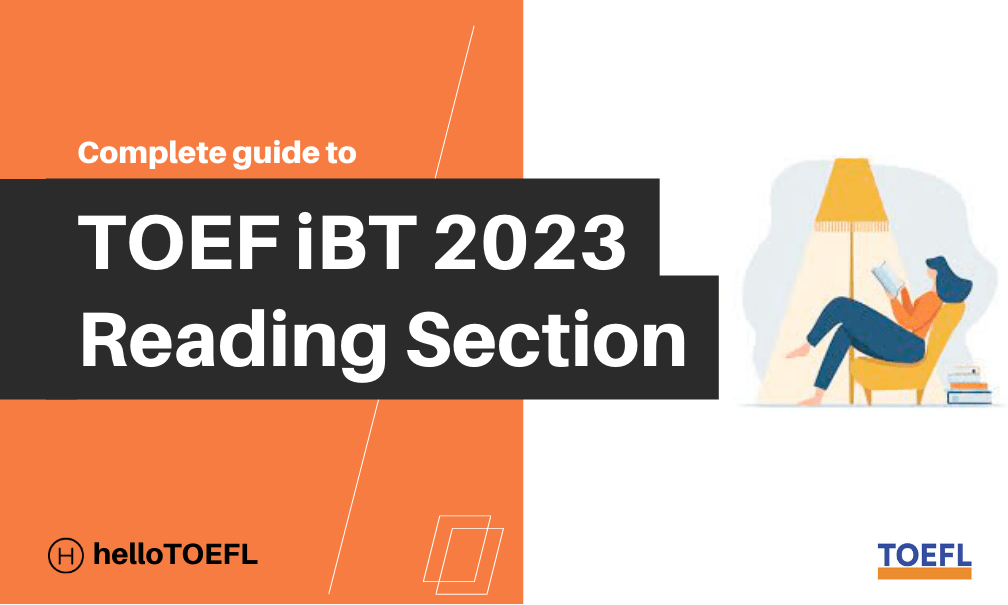
On the TOEFL, you begin with the Reading Section, this part of the test assesses your ability to understand passages taken from university-level textbooks. The passages are drawn from a range of academic subjects such as Science, Humanities, Social Science, etc.—but you don’t have to be an expert in these subjects to do well on the test. The passages provide all the information necessary to answer the questions.
The Reading Section is made up of four sets of passages. These are followed by questions that assess your comprehension and critical thinking skills. In this article, you can learn about the types of questions included in TOEFL Reading and how to effectively tackle them.
Overview of TOEFL Reading
| Reading section Tasks | Read passages and respond to questions |
| Number of Questions | 30 – 40 questions |
| Time Duration | 54 – 72 minutes |
| Reading Passages | 3 – 4 passages |
| Score Range | 0 – 30 |
| Type of Questions | Multiple Choice Questions |
The TOEFL Reading section contains 3 or 4 reading passages, each of which is roughly 700 words long. There are 10 questions per passage and you have 54 – 72 minutes to complete all the questions in this section.
The passages are grouped into sets. Each set has a different topic, but all of them are related to each other. For example, one set may be about the environment and another may be about education. The questions after each passage assess your reading comprehension skills in various ways. You need to read the passage carefully and answer each question by referring back to the text provided in the passage itself.
The questions are designed to test your comprehension of the passage and your ability to identify important ideas, draw inferences from them, and analyze their relationship with other concepts.
According to ETS, there are 3-4 passages of 700 words each that make up the Reading Section. Each passage is followed by 10 multiple choice questions. You will be given 54 minutes (3 passages) or 72 minutes (4 passages) to read all the passages and answer the questions that follow.
To avoid getting stuck on a question, you can skip any that are difficult and come back to them later. You should go back and answer all questions before the time runs out for the Reading section.

TOEFL Reading Section Question Types
The question types in the TOEFL Reading Section evaluate test takers’ ability to analyze and understand large amounts of information. It’s important for people taking the test to have a firm grasp on all aspects of this section, so you should spend time understanding everything about it before moving on.
There are three types of questions in the TOEFL Reading Section: Multiple Choice (MC), Sentence Completion (SC) and Table, Graph or Chart Interpretation Questions (TGI). In this article, we’ll go over each type of question and how you can use them to your advantage.
Let’s take a better look at the various types of questions covered under TOEFL Reading:
- Factual Information
- Negative Factual Information
- Inference
- Rhetorical Purpose
- Reading Vocabulary
- Sentence Simplification
- Insert Text
- Prose Summary
(1) Factual Information
In order to answer this kind of question, you must evaluate the offered information and recognize explicitly stated truths or facts within the passage. These can take many forms—Major concepts, Supporting information or Definitions
You are given 4 answer choices to choose from. Out of these, you are typically needed to select one response or in some cases even two. In the latter case, you will be informed that the answers are worth one point only.
How are Factual Information questions phrased?
Under this question type, you will get expressions like:
Paragraph 2 points out which of the following about Y?
According to paragraph 1, which of the following is true about X?
According to paragraph 3, how did X determine Y?
According to paragraph 4, why did X do Y?
(2) Negative Factual Information
(3) Inference
(4) Rhetorical Purpose
(5) Reading Vocabulary
(6) Sentence Simplification
(7) Insert Text
(8) Prose Summary
Extra test questions
Some test takers may be asked additional questions in the Reading and Listening sections of your test. These questions will not count towards your score—but you should still answer them seriously since you don’t know which ones are no-score value extra questions!
The reason for the Extra questions is to help ETS to:
- Test scores should be comparable between administrations
- Determine how these questions work under real testing conditions

